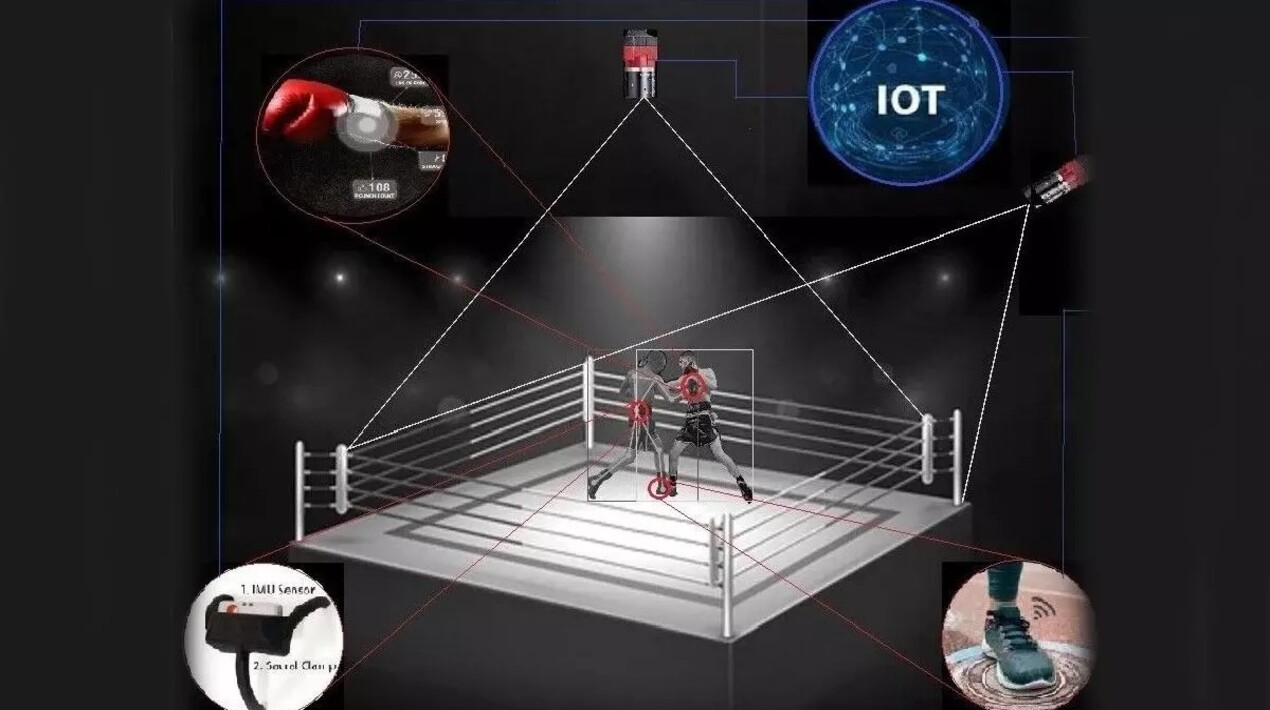
Researchers from the Indian Institute of Technology, Madras (IIT-Madras) are working with a sports institute in Karnataka to develop a cost-effective boxing analytics platform to increase India’s boxing medal tally at the 2024 Olympics.
The analytics platform called Smartboxer is being developed as a multi-version software by IIT-Madras’ Centre of Excellence for Sports Science and Analytics. According to a press statement by IIT-Madras, the platform will provide feedback and performance assessments using Internet of Things (IoT)-enabled wearable sensors and video cameras. The platform’s IoT-based applications include:
- Sensor-embedded gloves to analyse punch force
- Wireless foot insoles with a pressure sensor to record ground reaction force
- Wireless EMG sensors to record movement in the player’s lower body
- An inertial measurement unit to record movement in the player’s upper body
- Video cameras in the boxing ring will identify the left and right arms of a player and classify the movements as an attack, defence, or feint.
The press statement quoted an official as saying that Smartboxer will act as a bridge between the coach and the elite athlete to identify, understand, and improve the performance constructively. It will provide information on boxers’ strengths as well as areas that require development by highlighting patterns of movement, activity levels, and punch and defensive repertoires – both, technically and tactically.
The findings gathered from the sensors and video cameras will be merged to provide comprehensive boxing analytics to offer data about the key traits of the boxer. These traits are evaluated in the Olympics for scoring in boxing matches. They include the quantity and quality of punch, the dominance of the engagements, and competitiveness. Associate Professor of IIT-Madras’ Department of Applied Mechanics, Babji Srinivasan, said, “The smart boxer system integrates data from video streams and multiple IoT devices. The information extracted from this multivariate data provides fight analytics that can not only help coaches but also the judges quantify the key traits of boxing champions.”
To increase the number of medals in the 2024 Olympics, the Indian government has shortlisted key sports to focus its efforts on, including archery, boxing, shooting, badminton, wrestling, hockey, weightlifting, cycling, and athletics. A two-day conference themed ‘Innovative Technological and Sports Sciences Practices for High Performance in Youth Sports’ was organised by the National Centre for Sports Sciences and Research, a division of the Sports Authority of India (SAI), in association with the Sports Sciences and Analytics Centre of IIT-Madras in June. During the conference, a memorandum of understanding (MoU) was signed between IIT-Madras and the SAI to focus on making India self-reliant in sports technology and high-performance sports equipment.
Sports engineering, a relatively new discipline, is an interdisciplinary domain that requires the application of mathematics, physics, artificial intelligence, and IoT-driven wearables. Sports engineering helps understand the physiology and biomechanics associated with a sport. This helps solve sporting problems and better design sports equipment.
Wearable devices have received considerable global interest owing to their potential in a wide variety of applications. Increased research efforts are being geared toward the non-invasive monitoring of human health, as well as activity parameters. For instance, OpenGov Asia reported earlier this month that Curtin University in Australia has developed a wearable sensor system to track the movement of dancers, providing valuable insights into how they adapt to dance through disabling pain.
















